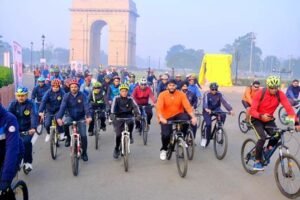LAPD Civil Rights Case: Jury Rules LAPD Not Liable for BLM Protestor’s Injuries
jatinnews.com November 20, 2024 0In a significant legal decision, a jury ruled on November 20, 2024, that the Los Angeles Police Department (LAPD) is not liable for the injuries sustained by a protestor during a Black Lives Matter (BLM) demonstration. The case, which captured public attention and raised important questions about police conduct and the use of “less lethal” munitions, has sparked debates on civil rights, policing practices, and the evolution of protest tactics in the United States.
The plaintiff, identified only as a protestor, had claimed that the LAPD’s use of “less lethal” munitions contributed directly to his injuries during a BLM protest held in 2020. The demonstration was one of many that took place nationwide in response to police brutality and systemic racism following the murder of George Floyd. The protestor alleged that he was struck in the head by a projectile fired by police officers while they attempted to disperse the crowd.
Testimony presented during the trial illuminated the dynamics of the protest,
highlighting both the actions of the demonstrators and the police’s handling of the situation. Eyewitness accounts depicted a tense atmosphere, with protestors expressing their frustrations over systemic injustices while the LAPD, tasked with maintaining order, employed various crowd-control measures.
The LAPD defended its actions by stating that the use of less lethal munitions, which include bean bag rounds and rubber bullets, is a necessary tool for managing large demonstrations. Officers testified that their intent was to minimize violence while maintaining safety for both protestors and bystanders. The police department argued that the munitions used during the protest were deployed in accordance with established protocols, aimed at dispersing an increasingly volatile situation.
During closing arguments, the defense underscored the complexities faced by law enforcement in high-pressure scenarios, emphasizing that police officers often must make split-second decisions to protect their own safety and that of the public. They contended that the LAPD acted reasonably given the circumstances and that the protestor’s injuries were not a direct result of police misconduct.
On the other hand, the plaintiff’s legal team painted a different picture, asserting that the LAPD’s use of force was excessive and unnecessary. They argued that the mere presence of less lethal munitions escalated the situation rather than defusing it. The jury heard testimony from experts in police practices who criticized the LAPD’s training and protocols regarding crowd control. They pointed to instances where similar tactics had led to serious injuries in the past, calling for more stringent guidelines on the use of such munitions.
Additionally, the protestor’s lawyers highlighted the psychological impact of police aggression on demonstrators, arguing that the fear instilled by the display of force could deter individuals from exercising their First Amendment rights. They claimed that this incident was reflective of broader systemic issues within policing, specifically regarding how authorities respond to peaceful protests.
As the jury deliberated, the case became a focal point for discussions about civil rights, police accountability, and the responsibilities of law enforcement during public demonstrations. Community activists and civil rights organizations followed the proceedings closely, viewing the outcome as an indication of how the justice system addresses claims of police misconduct.
In the end, after several days of deliberation, the jury reached a unanimous decision, exonerating the LAPD and concluding that the department was not liable for the protestor’s injuries. The verdict was met with mixed reactions from the public, with some expressing relief at what they viewed as a just ruling, while others decried the decision as a blow to civil rights and a sign of the judiciary’s unwillingness to hold law enforcement accountable.
The decision raises important questions about the balance between law enforcement’s duty to maintain public order and the fundamental rights of citizens to assemble peacefully and express their grievances. Advocacy groups are calling for a thorough review of the LAPD’s crowd control policies, urging the city to adopt more transparent and accountable practices that prioritize the safety of both protestors and police officers.
In light of the ruling, many are left pondering the future of police reform in Los Angeles and beyond. While the LAPD is not liable for the specific incident in question, the discussions surrounding the use of force, especially in relation to marginalized communities, continue to evolve. Activists are organizing to push for legislative changes aimed at reforming policing practices, ensuring that the voices of protestors are heard and respected without the fear of retaliation.
As the BLM movement remains a powerful force for social change, the LAPD’s case serves as a reminder of the ongoing struggles within the realm of civil rights. The journey toward accountability, transparency, and equitable policing is far from over, and the impact of this case will undoubtedly resonate within the community and the broader landscape of law enforcement practices for years to come. read more

